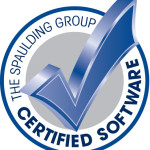The Internet today provides us with many opportunities to find examples of just about anything we may be looking for, including performance documentation. But, just because it’s published on the Internet, and just because it comes from a well known firm, doesn’t mean it’s appropriate for your use. Let’s discuss this further.
Performance documentation: copying from others can be risky
I recently conducted a software certification for an asset manager, who wanted some assurance that their in-house performance system was doing everything properly.
While we typically do these certifications for software vendors, we’ve done them for a variety of other firms, including custodians. It’s a fairly rigorous evaluation, that involves assessing a system using eight different criteria, one dealing with documentation.
This particular client had what at first looked like a very nice set of documentation to explain how they calculated rates of return; unfortunately, there were several issues with it.
Incorrect explanation of terminology
This document made reference to “personal rates of return,” something I’m highly supportive of. Unfortunately, it made the false statement that it’s accomplished with time-weighted return. In order to provide “personal rates of return,” one must employ money-weighted returns.
Incorrect definitions can mislead and confuse.
Inaccurate examples
We like to see examples, as they help drive home a point, as well as give the reader an opportunity to try their hand at what’s being explained.
This documentation provided several examples; unfortunately, their answers were incorrect. I suspect that the data that were shown in the tables they referenced might have been truncated: that is, for example, the real value was 7.15321689, but only 7.15 appeared in the table. Without knowing the full value, to the precision in which it’s stored, it’s impossible to realize the answers that were given.
Of course, it’s also possible that a mistake was made in their execution of the formulas, but I suspect not. Regardless, the examples need to be able to be confirmed, to ensure that everything works properly.
Parts that don’t apply
The documentation explained processing that didn’t apply to this firm’s system. For example, it spoke of linking quarterly returns; but this firm didn’t link quarterly, they always linked daily. To include such narratives can be misleading to someone who wants to understand the system.
If you’re going to copy performance documentation, make sure it passes certain tests
Documentation is often something people like to avoid doing, and so, to copy something that’s already been developed can be very appealing. If you’re going to do this, make sure it passes certain tests. For example:
- Does it apply to your firm’s system?
- Is the text accurate in every way, such as definitions and explanations?
- If examples are provided, have you tested them to make sure the math ties out?
- Does it cover all aspects of your system?
I don’t recall every copying off of someone else in school, while taking an exam or quiz. Part of the reason might have been my fear that the person I might copy off of was guessing and really didn’t know the work any better than I did. And, of course, there’s always the risk of getting caught. And, I think that copying never occurred to me.
But copying in the real world is okay, to some extent. One should be respectful of ownership of material. In this particular case, the client made no secret that their documentation was developed by someone else, as it was literally photocopied, not rewritten. By the way, I informed the developer of the documentation of the errors, too.
GIPS(R) Policies & Procedures: other documentation that you might be inclined to copy
When you’re becoming compliant with the Global Investment Performance Standards, one of the major tasks is the development of your Policies & Procedures. We provide our new GIPS verification clients our proprietary GIPS Orientation Kit™. Included is a template to help firms craft P&P, along with sample policies from other firms.
I suspect some firms would like to just go ahead and copy someone else’s policies. The same tests should be applied here, too, to ensure that what you copy does apply, that it’s complete and accurate, etc.

